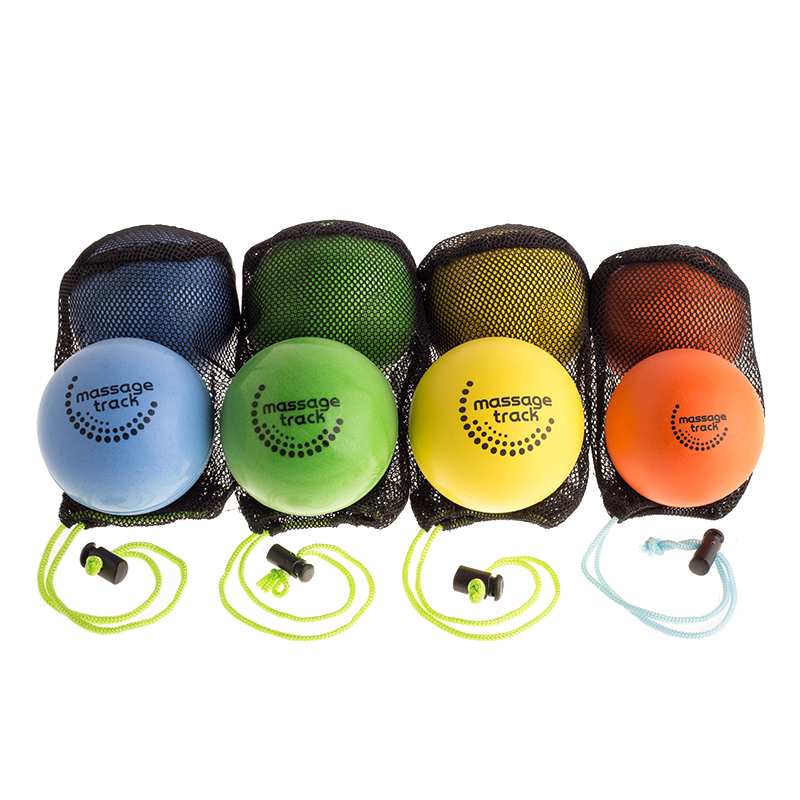Myofascial Release: How to Use at Home

What is Myofascial Release?
Let’s break down the term “myofascial release.” The prefix “myo” refers to your muscle, and “fascial” refers to your fascia. For those of you who don’t know, fascia is fibrous connective tissue made of collagen that is found throughout your body. Fascia surrounds your muscles, organs, and acts as a network-like support system throughout your entire body.
The term Myofascial release was created based on the theory that muscles and fascia can get tight, bound up, and form adhesions that limit and restrict movement. As far as muscular tightness, there is plenty of evidence to suggest that certain metabolic processes can cause “chemical muscle guarding,” a state of sustained contraction within the muscle tissue. With regards to fascial adhesions, there is definitely debate in the literature regarding how fascial adhesions actually form and whether or not they exist. The physiology of this topic can get quite complex and there is a huge neurological component that deals with down-regulation of certain neural pathways. Many clinicians continue to argue about the mechanisms by which soft tissue mobilization and myofascial release actually work. One thing that most clinicians and researchers can agree on, however, is that soft tissue mobilization and myofascial release are effective at treating a variety of conditions.
How I Use Soft Tissue Mobilization in the Clinic
My educational background in manual therapy has led me to pursue a clinical path that utilizes a variety of manual therapy techniques in practice. In conjunction with joint mobilization and neurodynamic techniques, I also perform soft tissue mobilization and myofascial release. I often use my hands for these treatments but I will also occasionally use tools. Instrument assisted soft tissue mobilization (iASTM) has become a popular treatment intervention lately among healthcare practitioners, primarily to protect our own hands from wearing out. The exact techniques I use in the clinic will vary from patient to patient based on each person’s condition and individual needs. There are a ton of different soft tissue mobilization techniques and they can be used for a variety of conditions including low back pain, shoulder pain, forearm pain, postural issues, and tendinitis treatment. Regardless of what condition I’m treating, I often try to reinforce the importance of continuing with a home program.
Myofascial Release as Part of Your Home Program
Once I have diagnosed the patient’s condition and determined the cause and contributing factors, I then develop an individualized plan of care. The components of each plan of care will vary, but all of them include a home program. Patients only spend several hours with me each week and an effective program requires commitment and adherence. Although many soft tissue techniques that I perform in the clinic require the skill of a trained manual therapist, there are certain things that patients can do at home to reinforce soft tissue mobility.
Soft tissue mobilization techniques are often an important part of a home program. They can help manage pain, relieve muscle tension, and maintain the mobility that was gained during a treatment session. I always encourage patients to perform some type of active mobility drill after any soft tissue mobilization or myofascial release techniques to reinforce that new range of motion. “Gain the range, then train the range.” Not every patient requires soft tissue work or myofascial release as part of their program, but many patients do. When appropriate, I often recommend that patients invest in one of the many myofascial release tools that are available on the market.
Myofascial Release Tools
There are a ton of different myofascial release tools available. The great thing about these is that most of them are very lightweight and easily transportable so that you can use them at home, at work, and even when you travel. Deep Recovery sells a nice assortment of massage balls that can fit in your purse or laptop bag. There are also other, larger tools that I recommend to patients such as foam rollers. You can read one of previous posts to learn more about the science behind foam rolling and how it actually works.
How To Use Myofascial Release Tools
How you use these tools depends on the outcome you are looking to achieve as well as the individual tool itself. Here is a great video demonstration by my wife on how to use a myofascial release ball to relieve pain between the shoulder blades. I have several videos available on my Youtube Channel that demonstrate various mobility drills, some of which utilize these types of tools. You can also see many of these videos on the PhysioStrength Instagram Page. Be sure to follow us on Instagram because we plan to post more videos utilizing these myofascial release tools soon!
If you have any questions about myofascial release tools, please feel free to contact me and I can point you in the right direction. As always, feel free to share this posts with family, friends, or anyone you think can benefit from it. Lastly, be sure to subscribe to our content to receive notifications of new posts directly to your inbox. Cheers!


